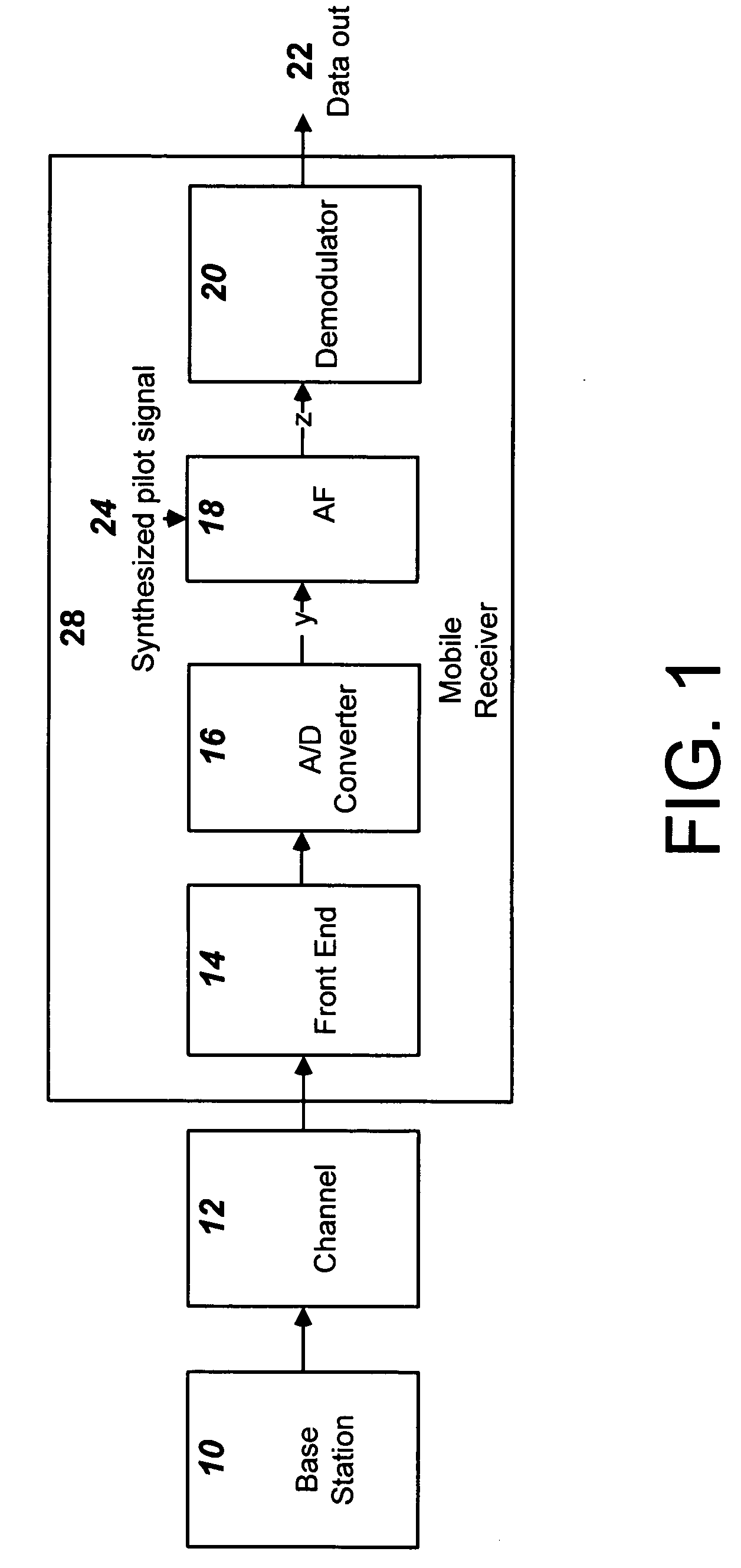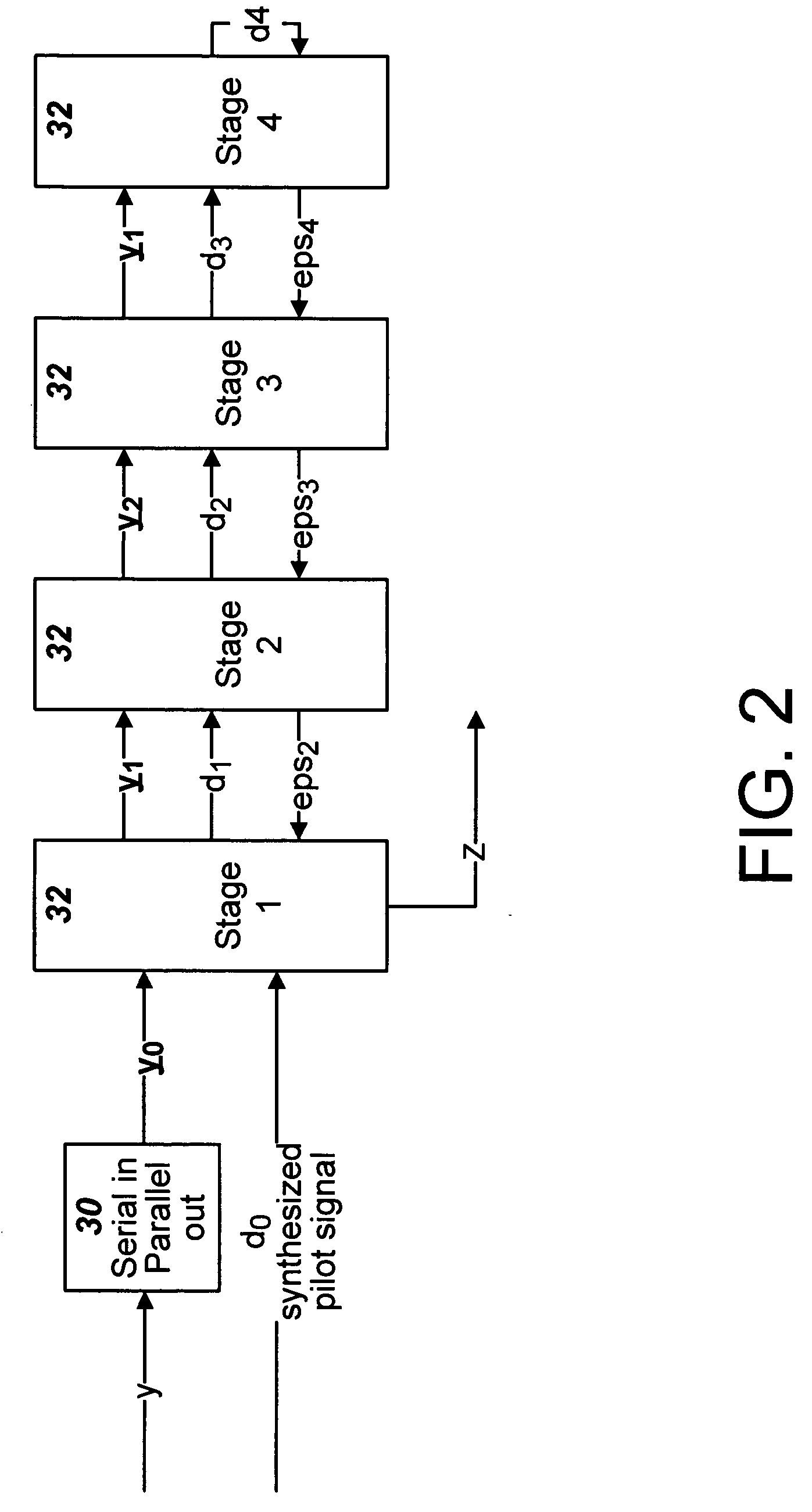Use of adaptive filters in CDMA wireless systems employing pilot signals
a technology of pilot signals and adaptive filters, applied in pulse manipulation, pulse techniques, multi-frequency code systems, etc., can solve the problems of inability to use equalization techniques to increase the capacity of existing cdma networks, including cdma 2000 networks, and inevitable interferen
- Summary
- Abstract
- Description
- Claims
- Application Information
AI Technical Summary
Benefits of technology
Problems solved by technology
Method used
Image
Examples
Embodiment Construction
[0011] An aspect of the present invention provides a CDMA wireless communication system including a receiver having an adaptive filter coupled to receive an input signal comprising a plurality of user signals and a pilot signal. The input signal is characterized by a symbol period defined by a CDMA transmitter. The adaptive filter has at least one filter coefficient determined from the input signal multiplied by a synthesized pilot signal with a result integrated over one or more symbol periods.
[0012] Another aspect of the present invention provides a CDMA wireless communication system including a receiver having an adaptive matched filter coupled to receive an input signal comprising a plurality of user signals and a pilot signal. The input signal is characterized by a symbol period defined by a CDMA transmitter. The adaptive matched filter has at least one filter coefficient determined by cross correlation of the input signal with a generated pilot signal where the cross correlat...
PUM
 Login to View More
Login to View More Abstract
Description
Claims
Application Information
 Login to View More
Login to View More - R&D
- Intellectual Property
- Life Sciences
- Materials
- Tech Scout
- Unparalleled Data Quality
- Higher Quality Content
- 60% Fewer Hallucinations
Browse by: Latest US Patents, China's latest patents, Technical Efficacy Thesaurus, Application Domain, Technology Topic, Popular Technical Reports.
© 2025 PatSnap. All rights reserved.Legal|Privacy policy|Modern Slavery Act Transparency Statement|Sitemap|About US| Contact US: help@patsnap.com



